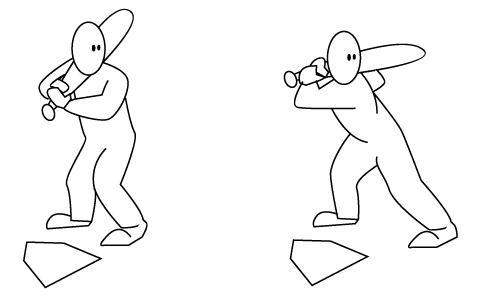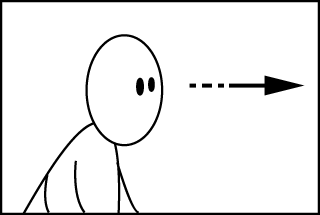 Anticipation
An action occurs in three parts: the preparation for the action, the action
itself, and the termination of the action. Anticipation is the
preparation for the action. Anticipation is an effective tool for indicating
what is about to happen.[1]  Indicating Speed Take the swing of a bat. If the bat is swung far back, one expects the ball to fly far and away upon contact, or the batter to fall over from the power of the swing. If the bat is only pulled slightly back, we expect a ground ball, or a pop fly with very little distance. The amount of anticipation used considerably affects the speed of the action which follows it. If the audience isn't properly prepared for a fast action, they may miss it completely. The anticipating action must be made larger or the action slower.[1]  Directing Attention Anticipation can also be used to direct the audiences attention.[1] A character looking off screen and reacting provides the audience with a cue to where an important action is about to happen.
 Revealing In addition, Anticipation could be used to indicate what a character is about to do. When a person is about to steal something, their eyes shift up and down the grocery aisle, looking for security, and then at the item they wish to take. This action gives the audience an opportunity to see what the theif will take before he acts.
Rules are made...
 [ s t a g i n g ] |